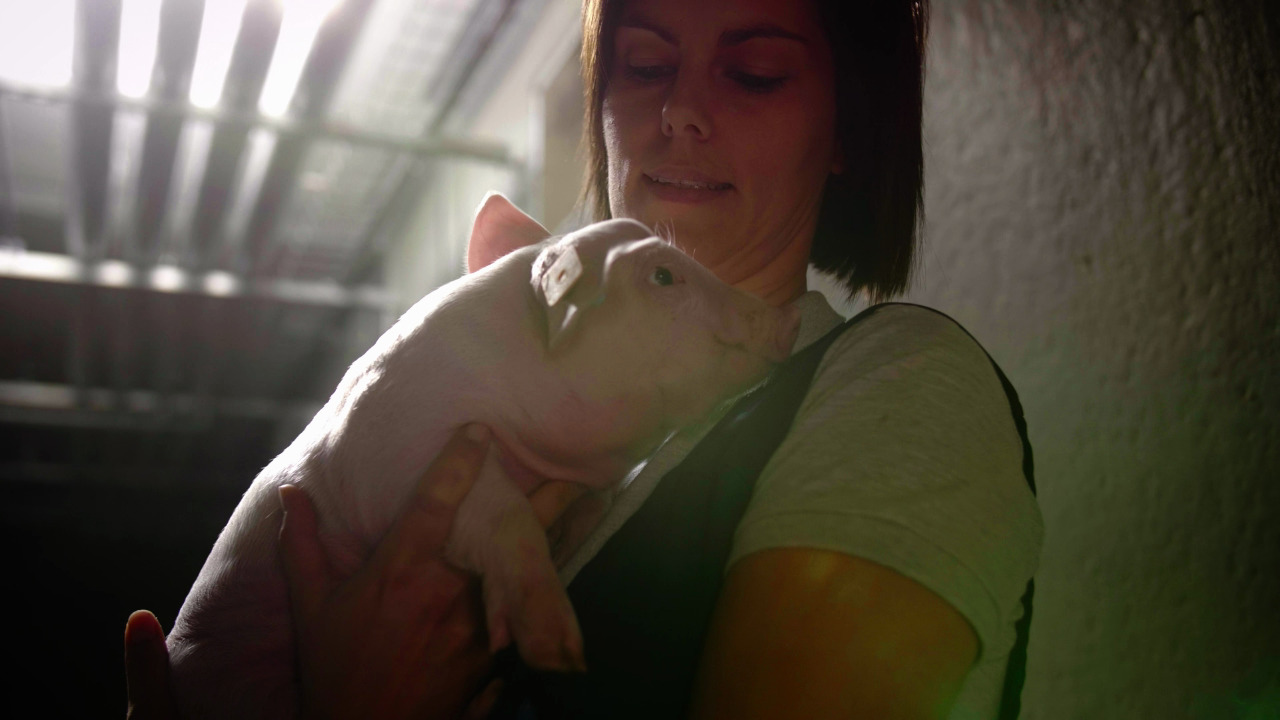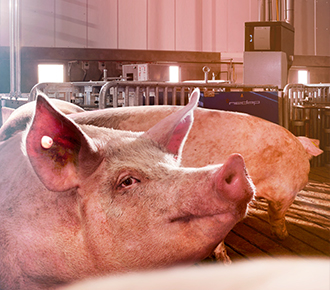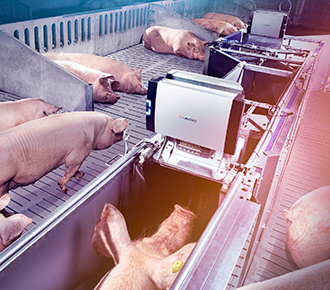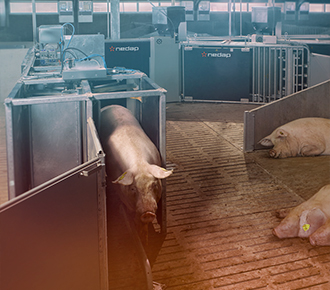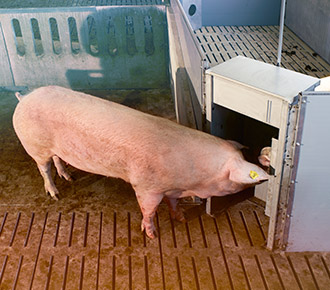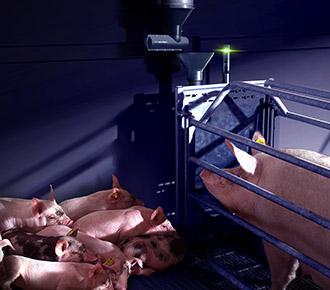“If we build another barn, we will certainly choose to work with Nedap again.”
Who?
Van Marcke farm
Kenny van Marcke, owner
Where?
Wortegem, Belgium
About the farm
- 800 sows in group housing
- 1 Star "Better Life Concept"
- Sustainable water purification and heating
Nedap solutions
Results
Better milk yield and uniform, healthy litters thanks to automated feeding
The modern pig farm of Kenny and Inge van Marken lies amid the fertile fields in Wortegem, Belgium, East Flanders. The entrepreneurs are committed to the welfare of their animals and choose sustainable solutions as much as possible. By smartly automating the company, this goes well with good technical results and an efficient working method.
Sustainable and animal-friendly systems
The farm of Kenny and his parents looks beautiful in the radiant morning sun. In addition to good care for the animals, the entrepreneurs also value good care for their environment. “We love sustainable systems,” Kenny says. “We purify the drinking water with a lava filter from reed plants. And we heat the berths in the sow shed with wood pellets.” Kenny’s parents started rearing fattening pigs in 1983. There is now a new sow barn for eight hundred sows, equipped with various automated solutions from Nedap. “Because we consider the welfare of the animals important, we keep our pigs according to the 1 Star Better Life concept. That is why we have also opted for group housing. The sows are free to roam and are fed individually ”, Kenny explains their choices.
Fully automated feeding and weighing
Optimal condition, good health and well-being of the sows and piglets are the basis for successful results at Kenny and Inge’s farm. Thanks to the automated feeding system and automated weight monitoring, the pig farmers can precisely control the desired condition of the sows. Kenny explains: “In the gestating sow shed, each animal is weighed every day when they leave the feeding station. Once a week I get an average weight and that is how we adjust the feeding schedule for each animal separately.”
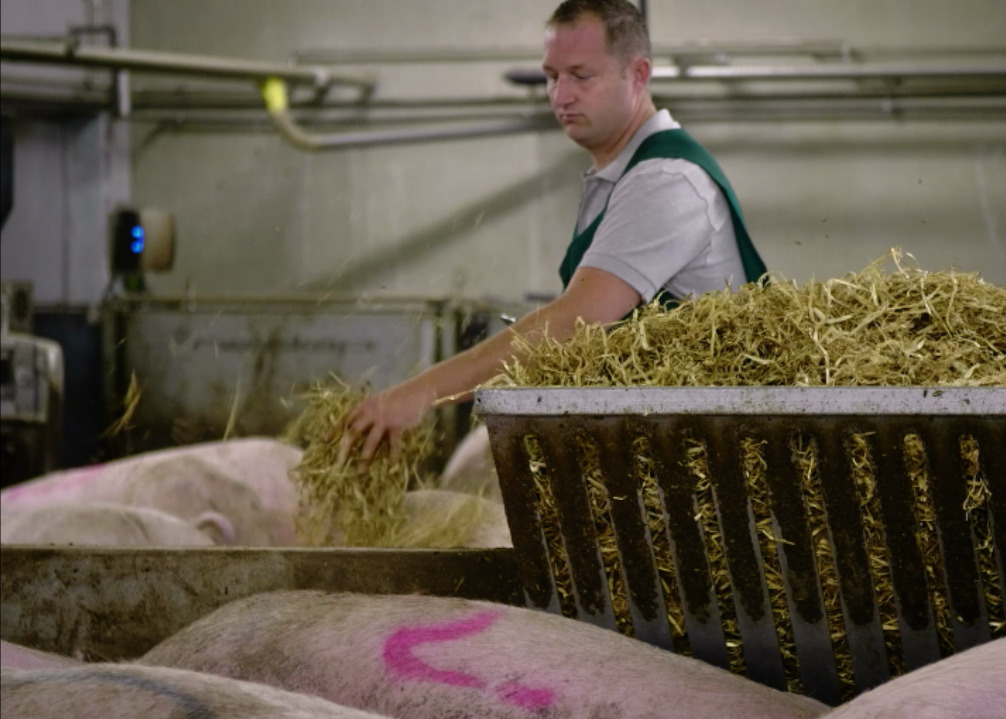
Teaching feeding station
The pig farmers let the young gilts get used to the feeding station. “When the gilts come to the farm, they go to the quarantine stable with a training station. It is important to teach them the feeding system well. Once they get to know it well, it also runs smoothly when they get into the gestating sow shed. Then they understand the system and automatically go through the gates. ”
Better results, more efficient working method
In addition to feeding and weighing, heat detection and separation are also automated. “The heat detection is logically situated in the routing of the sows and accurately indicates when a sow is on heat. Then she will automatically be separated from the group.” Removing sows in heat from the group in time is important to prevent agitation in the group and thus minimize skin damage and leg injuries. “You also see that the animals exhibit natural behavior, because there is a lot of space and peace in the barn.” Good heat detection also promotes better fertilization results and a more efficient working method in the breeding shed. Kenny notices this clearly in practice: “When the sows come into the mating shed, we see that they are in heat faster and evenly. The first day we inseminate 90% of the sows and by the second day they are all inseminated.”

One portion of food every four hours
“We also use automated feeding in the breeding and farrowing shed”, Kenny shows. “This way we can feed each animal individually and get maximum feed into the sow.” A high feed intake in the mating shed ensures that sows enter estrus quickly and clearly. A high feed intake in the farrowing house stimulates milk yield and ensures that the sows maintain better condition during the lactation phase. “In the farrowing pen, we feed a portion of feed every four hours, including at night. This way we see that the feed stays fresh and that the feed bowl is nicely eaten without feed waste. We see through automated feeding that they have a good milk yield, uniform litters and healthy piglets. The piglets stay with the mother for twenty-eight days and the condition of the sow is optimal even after weaning.”
User friendly
Employees also enjoy working with Nedap’s systems. “The software program is very user-friendly. Our employees can get started right away. If we build another barn in the future, we will certainly choose to work with Nedap again.”
Solutions designed with the sow in mind
Search results for: ''
There are no results matching your criteria. Please try again with different criteria.
